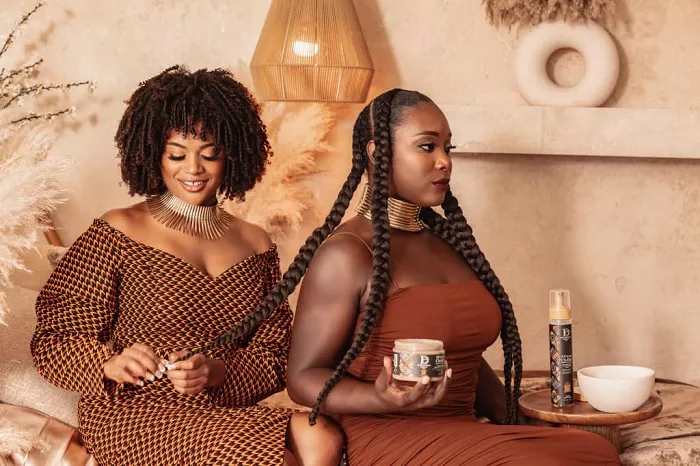Design Essentials is celebrating a significant milestone: 35 years at the forefront of Black hair care. As the brand reflects on its journey, company president Cornell McBride Jr. emphasizes that its success has always been about more than just products—it’s about empowerment, education, and community.
“Afros have long stood as symbols of resistance, from Angela Davis to Diana Ross,” McBride Jr. told ESSENCE. “The natural hair movement began as a rebellion against straightened hair—but at that time, there simply weren’t products that could effectively detangle coily textures.”
That gap in the market inspired a legacy. McBride Jr.’s father, Cornell McBride Sr., co-founded M&M Products Company, one of the largest Black-owned hair care brands, launching Sta-Sof-Fro in 1973. The revolutionary Hair and Scalp Spray softened textured hair, making it easier to manage and style, and quickly became a staple in the Black community.
After selling M&M Products, McBride Sr. launched Design Essentials in 1990. From the beginning, the company prioritized not only salon-quality hair care but also economic empowerment. “We built a professional brand through the salon community,” McBride Jr. said. “Distributors would sell our products directly from their cars to stylists—like a mobile beauty supply store.”
In the early ’90s, as interest in natural hair declined, Design Essentials introduced Wave by Design, a permanent curl system, followed by chemical relaxers. Despite evolving trends, the company distinguished itself through innovation—whether in delivery systems, packaging, or hands-on education for hairstylists.
“From day one, we’ve had positive feedback for our brand and product performance,” McBride Jr. said. “We’re not just selling products—we’re in the field, educating and supporting professionals.”
But the brand’s mission goes beyond the salon. Rooted in community, Design Essentials seeks to uplift the African diaspora at home and abroad. This includes ethical sourcing initiatives, such as the use of chebe powder from Chad in their African Chebe Growth Collection. The company has reinvested in the local community, funding projects like a safer well and school roof repairs.
“The business of Black hair is also about connection,” McBride Jr. said. “We didn’t want to just extract—we wanted to give back.”
One of the greatest lessons of the past 35 years, McBride Jr. says, is realizing just how broad the Black hair care market truly is. Ingredients like chebe powder, rosemary, and mint cater to coily, curly, and wavy textures—hair types that now make up nearly two-thirds of the global market.
From the natural styles of the 1970s to the Jheri curl era of the 1990s and today’s multifaceted hair journeys, Design Essentials has evolved with its community.
“The one-year-old Design Essentials and the 35-year-old Design Essentials are two different entities,” McBride Jr. reflected. “You don’t make it to 35 by doing the same thing you did at the beginning.”
As it moves forward, Design Essentials remains committed to innovation, community-building, and honoring the cultural legacy of Black hair.
Related Topics:
- Remove Dandruff Without Washing Hair | Natural Scalp Care Solutions
- What Styling Product Should I Use?
- How Often to Wash Fine Hair Guide?


